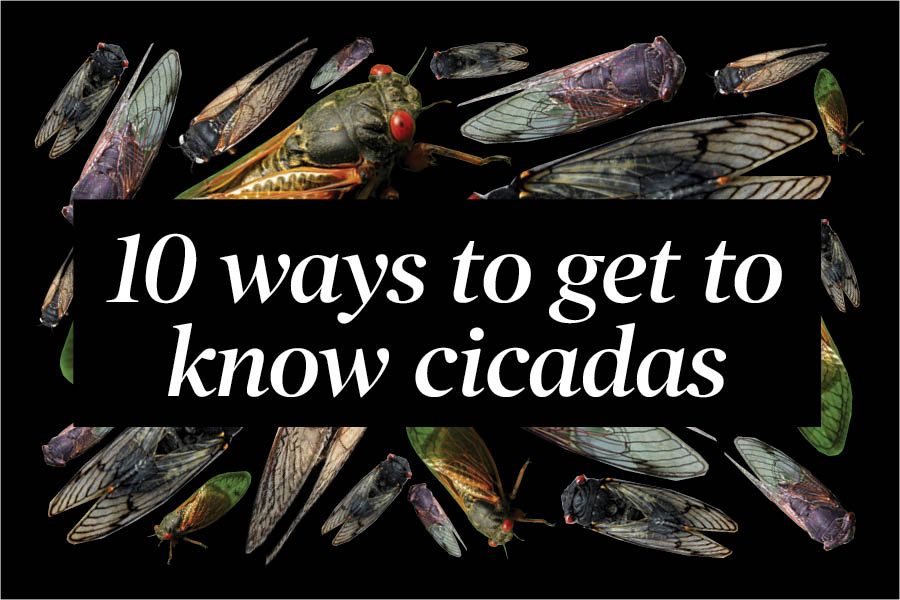1. Annual vs. periodical
Annual cicadas are found throughout the world, but periodical cicadas are unique to North America. They differ slightly in color and size, with the annual cicada being slightly larger than the periodical ones. Annual cicadas emerge every summer, but periodical cicadas occur much less frequently.
2. Life cycle
For both the 17-year and the 13-year cicada broods, life begins when the nymph (the young cicada) hatches from its egg, which is usually located in new growth of woody plants. Soon after, it buries itself underground and waits either 13 or 17 years until it emerges and begins the four- to six-week mating period.
3. Life underground
Despite the common belief that cicadas hibernate during their time underground, periodical cicadas are actually conscious and active. In their nymph forms, where periodical cicadas spend the majority of their lives, they feed on sap from tree roots and excavate tunnels. When the soil eight inches underground reaches about 64 degrees, the cicadas start to emerge.
4. Broods
All cicadas which emerge in a given year and share the same lifestyle are known as a single brood. The term is used to categorize cicadas rather than explain their evolutionary histories. Brood XIX, the 13-year brood, is geographically the largest periodical brood, and Brood XIII, the 17-year brood, is the brood with the largest size cicadas.
5. Color and size
Periodical cicadas have a black body with translucent wings and orange veins. Their eyes, a distinct bright red, are different from annual cicadas, which often have hints of green. Periodical cicadas are typically between one to two inches in length and have a three-inch wingspan.
6. Sound
The cicada’s sound, a loud, high-pitched buzzing, will be noticeable for their four- to six-week period of emergence this summer. The sound is produced only by the male cicadas, which synchronize with each other in large groups to establish territory and attract mates. Noise from periodical cicadas is often more noticeable due to their large numbers, though the noise itself is not noticeably different than non-periodical ones. In large groups, the sound can be as loud as a lawnmower.
7. Edibility
For both humans and animals, cicadas are edible. The high-protein, low-cholesterol insect snack has been incorporated into experimental menus and hailed for its meat-like qualities. Cicadas have long been a part of cuisines throughout the world, including Thailand and Congo. Though their nutty flavor and crunchy texture may be appealing, those with shellfish allergies should steer clear of the snack.
8. Danger
The cicadas are not dangerous for humans or animals. The insects are not venomous or poisonous for pets. However, snacking on too many cicadas can cause stomach trouble for dogs and cats since the exoskeleton can be difficult to digest.
9. Ecosystem impact
Periodical cicadas are often beneficial to their environments. Cicadas can prune trees and aerate soil. Once they die, their bodies serve as a source of nitrogen for trees. When they emerge, they are also a food source for lots of wildlife, including bears, birds and raccoons, partially due to their bounty.
10. Climate change
Global warming is predicted to impact the time frame for when periodical cicadas emerge. Experts predict periodical cicadas will emerge earlier in the year since warm temperatures are essential in emergence and the potential breakdown of the cicada’s current periodicity.
Sources: AP News, Biodiversity Research Collections at the University of Connecticut, Britannica, University of Illinois Urbana-Champaign College of Agricultural, Consumer & Environmental Sciences, ABC 5 Chicago, National Wildlife Federation

















